Year 1893
In 1893 a naval squadron of the Regia Marina visited Sanremo, in the roadstead and in the harbour. It was formed by the Battleships Lepanto, Enrico Dandolo and the Affondatore, three Cruisers and some Destroyers.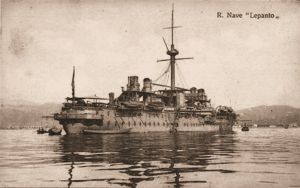
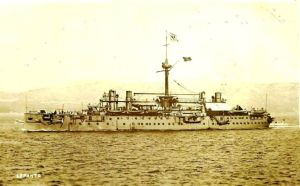 In the postcard the Battleships Lepanto, launched in 1883, was the forerunner model, together with the twin unit Italia, of battleships and for several years they were the largest and fastest warships in the world.
In the postcard the Battleships Lepanto, launched in 1883, was the forerunner model, together with the twin unit Italia, of battleships and for several years they were the largest and fastest warships in the world.
Although they became obsolete, with the advent of the quick-fire cannon, they remained among the best ships of the Regia Marina at the time.
The Battleship of the Regia Marina Enrico Dandolo participated in the Italian/Turkish War (1911/12) and the First World War.
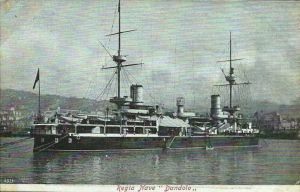
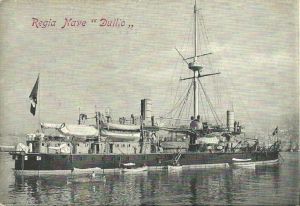 Launched in 1878 was considered, together with its twin ship Caio Duilio (photo on the right), the Naval Unit more powerful than the Epoch and together they could oppose the whole French Naval Fleet of the Mediterranean.
Launched in 1878 was considered, together with its twin ship Caio Duilio (photo on the right), the Naval Unit more powerful than the Epoch and together they could oppose the whole French Naval Fleet of the Mediterranean.
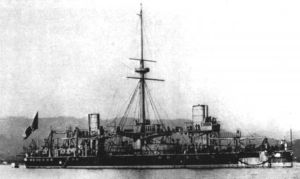 Both mounted the largest cannons that could be built at the time.
Both mounted the largest cannons that could be built at the time.
The Armored Aries in Towers of 1st Order Affondatorehad been launched in a London shipyard in 1865, had participated in the Battle of LISSA trying to spur (it had a spur of 2,50 meters!!!) the enemy ship Kaiser without succeeding.
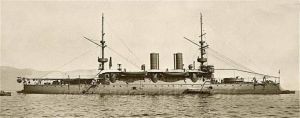 For its time it was considered a futuristic ship having only two 254/30mm. cannons, of a remarkable calibre for the time, placed on rotating turrets one at bow and one at stern.
For its time it was considered a futuristic ship having only two 254/30mm. cannons, of a remarkable calibre for the time, placed on rotating turrets one at bow and one at stern.
But she had an inadequate motor apparatus, the excessive length that slowed down the tacking on board and the centre of gravity was so high that on 6 August 1866, off the coast of Ancona, a storm sank it.
Recovered, from 1904 to 1907 it served as the main vessel in the defence of the port of Venice.
(Images and text: Dino Taulaigo)
Note by Sergio Manente:
The warships of the period, and for a long time, in fact, had the bow upside down (more advanced in keel and backward on deck) in "ancient" style from the beginning even with a "ram" below the waterline level and a reinforced bow up to the bridge where there was a rostrum sketch to avoid it to penetrate too much (and therefore to avoid it getting stuck) as for the ancient Phoenician and Roman ships.
Then they remained with a reinforced prow because the spurting technique was used for a long time (with the advent of longer range cannons and more and more technological and precise tappets).
Even in the Second World War it was a routine technique, but now it was used almost only against submarines on the surface or intent on diving, in short, against those who were defenceless or in any case poorly defended.




